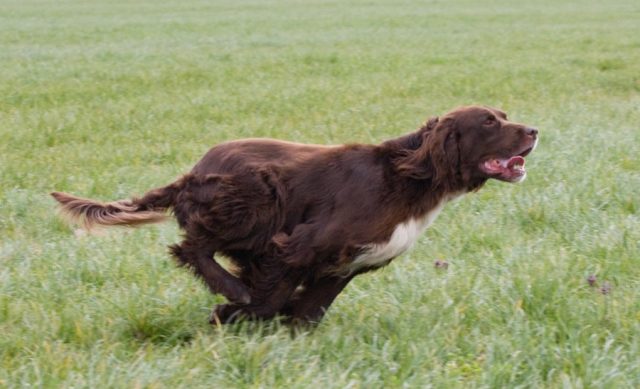Type the name of the breed you're looking for below
[wpdreams_ajaxsearchlite] Don't see the breed your're looking for? Click here and let us know!
Breed Characteristics
1 paw - breed exhibits the least amount of this characteristic
5 paws - breed exhibits most amount of this characteristic
German Longhaired Pointer
| Other Names | Deutscher Langhaariger, Deutscher Langhaariger Vorstehhund, Pointer (German Longhaired), Langhaar, German Long-Haired Pointing Dog |
| Nicknames | GLP |
| Country of Origin | Germany |
| Weight | 66 lbs. (30 kg) |
| Height (at withers) | Males: 24 – 28 in. (60 – 70 cm) Females: 23 – 26 in. (58 – 66 cm) |
| Coat | The coat is medium length, about 3 to 5 cm (1.2 to 2.0 in) long on the body, with the feathering somewhat longer. The coat is slightly wavy, but must not be curly. It is not silky or soft, but rather firm and shiny. It always has a double coat, with the undercoat being quite dense, but not so profuse as to make the guard hairs stand out from the body. |
| Colour | The colour is solid liver with white permitted on the chest, paws, and down the top of the muzzle, or dark brown roan, with large patches of solid brown, especially on the head, ears, back, and base of the tail. |
| Litter Size | 4 - 6 puppies |
| Life Span | 10 - 14 years |
| Origin & History | The GLP was developed in Germany for use as a pointer. It was originally a rather slow dog, and was crossed with setters and English Pointers in the 19th century to improve speed. It was very stubborn and temperamental, and has since been bred for a steady, friendly temperament. It was first shown in 1878 in Frankfurt, and at this time the first breed standard was written. Breeders then began to focus their efforts on producing dogs that performed equally well in the field and the show ring, an endeavour that is continued by breeders today. The Large Munsterlander was developed from the GLP after it was decided that GLPs must only be brown-and-white, the black-and-white strain became the ancestors of the Large Munsterlander. |
| Personality | GLPs are a kind, gentle, friendly, and intelligent breed. They are very affectionate, and may experience separation anxiety. They only make good pets when properly exercised, as they need a "job" to do, and do not adapt well to a sedentary life. The GLP is an excellent family pet, as it enjoys playing with children. It is very sociable with dogs. |
Care Requirements
| Health | GLPs, because they are quite rare in most parts of the world, and thus are unprofitable to irresponsible breeders such as puppy mills and backyard breeders, do not have any genetic disorders that are prevalent in the breed. Their ears are mildly prone to infection, a problem which is easily avoided by cleaning the dog's ears on a regular basis, as well as after swimming. |
| Grooming | GLPs need a moderate amount of grooming about once or twice a week. |
| Exercise | The GLP is very trainable, and loves to work. Because of this, it needs large amounts of exercise daily, needing more than most pet owners can give |
| Other Considerations | It is not well suited for urban life, as it thrives on having lots of room to run and swim. Its ideal setting would be in a rural area, with an active owner who hunts with the dog on a regular basis. They are highly intelligent, very trainable, and athletic, traits which make them suitable for many dog sports, especially field trials, obedience, and agility. |



